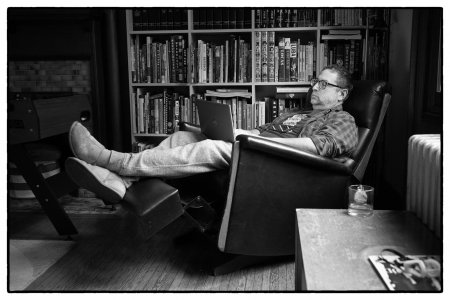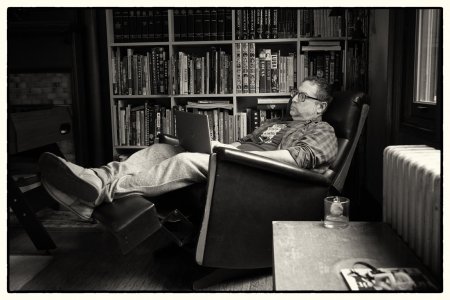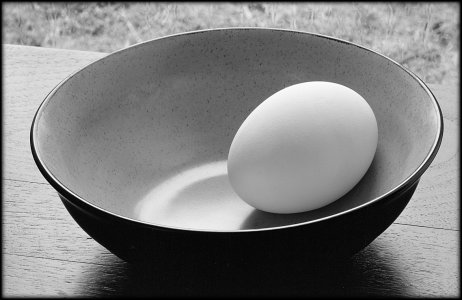Benjamin Marks
Mentor
I have always liked B&W images for my work better than color. I see great stuff here, and from the masters, in color. It's just that I don't "speak" color as fluently as black-and-white. My digital conversion routine is pretty set these days:
1. Raw import.
2. Make any adjustments necessary in PS
3. Convert to BW - Nik SilverFX Pro is my go-to here.
4. Flatten the resulting file layers, resize (if needed, including converting from 16-bit to 8-bit during any size reduction).
5. Convert to Grayscale
6. Save to JPG.
7. Share with the world (SmugMug, RFF, Blurb books etc.)
Now here's the question. Prior to resaving (which I try to do only once to JPG, as it is a lossy compression scheme), the file I am looking at on screen is a B&W rendering of the original image. I don't tend to "tone" by faking a selenium look or anything like that. If I convert to Grayscale at this point, the image on the screen does not change its appearance at all. All I am doing, it appears from the screen, is just discarding color data that I don't need. The result is a more modest sized file that is easier to post etc. If I have decided at this point that I have made a mistake, I go back to the original RAW and start the process again with the data-rich "original" file.
Just wanted to take RFF's temperature on your own practices:
- When you shoot for a BW effect do you bother saving the color data in the file when you get to the end of the process?
- If so, can you talk about the thought process leading up to that decision?
- For those of you with monochrome cameras (Leica, Pentax), I assume that all the sensors are recording is luminescence values anyway. Any thoughts?
- Does my practice seem foolish or disadvantageous in any way?
In general, my goal is a full toned, photograph with enough dynamic range to interest the viewer. Here's the pic I posted this morning, which is a pretty good example of an end product that works for me.
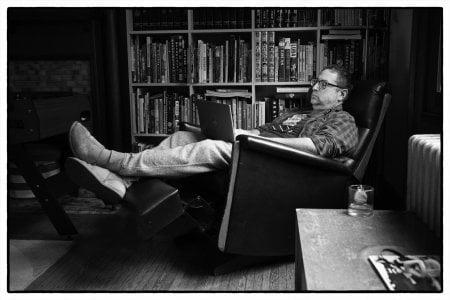
1. Raw import.
2. Make any adjustments necessary in PS
3. Convert to BW - Nik SilverFX Pro is my go-to here.
4. Flatten the resulting file layers, resize (if needed, including converting from 16-bit to 8-bit during any size reduction).
5. Convert to Grayscale
6. Save to JPG.
7. Share with the world (SmugMug, RFF, Blurb books etc.)
Now here's the question. Prior to resaving (which I try to do only once to JPG, as it is a lossy compression scheme), the file I am looking at on screen is a B&W rendering of the original image. I don't tend to "tone" by faking a selenium look or anything like that. If I convert to Grayscale at this point, the image on the screen does not change its appearance at all. All I am doing, it appears from the screen, is just discarding color data that I don't need. The result is a more modest sized file that is easier to post etc. If I have decided at this point that I have made a mistake, I go back to the original RAW and start the process again with the data-rich "original" file.
Just wanted to take RFF's temperature on your own practices:
- When you shoot for a BW effect do you bother saving the color data in the file when you get to the end of the process?
- If so, can you talk about the thought process leading up to that decision?
- For those of you with monochrome cameras (Leica, Pentax), I assume that all the sensors are recording is luminescence values anyway. Any thoughts?
- Does my practice seem foolish or disadvantageous in any way?
In general, my goal is a full toned, photograph with enough dynamic range to interest the viewer. Here's the pic I posted this morning, which is a pretty good example of an end product that works for me.

vitaly66
slightly tilted
One thing in your workflow jumps out, converting from 16-bit to 8-bit at step 4.
Perhaps I misunderstand your description. Generally, though, isn't it preferable to continue with 16-bit processing as far as possible, up to export to jpeg?
Otherwise, the limitations of a 256 value range -- even for b&w -- can lose too much data and affect tonal quality in output.
(I'm using a Pentax Monochrome, so the raw files are already in greyscale. Yet I still keep 16-bit through all successive stages of post-processing, up to export to jpeg.)
Perhaps I misunderstand your description. Generally, though, isn't it preferable to continue with 16-bit processing as far as possible, up to export to jpeg?
Otherwise, the limitations of a 256 value range -- even for b&w -- can lose too much data and affect tonal quality in output.
(I'm using a Pentax Monochrome, so the raw files are already in greyscale. Yet I still keep 16-bit through all successive stages of post-processing, up to export to jpeg.)
Dogman
Mentor
I simplify, I shoot B&W JPEGs and process the files in LR and Silver Efex.
I know all the technical reasons for shooting Raw but I'm only interested in how the photo looks, not the process that gets the look. Virtually everything I shoot is B&W. It's my mindset. So I start by cooking in the B&W look with a JPEG so there's no alternate color version to consider or second-guess. My comparison is Tri-X and HP5 film--the stuff I shot for decades before digital. The problem is that digital images--even JPEGs--look too clean. I try to dirty them up a bit in Silver Efex before final processing in LR. I then save them as another generation JPEG with one JPEG of a smaller size to post online. Technical image quality is not my goal. Just the implied feeling of the subject.
Here's a few done over the last month. All JPEG B&W, all processed in Silver Efex and LR. Nothing fancy.

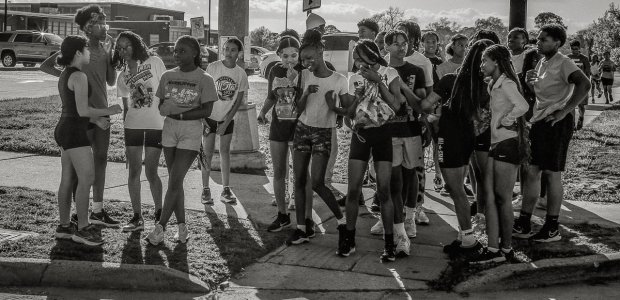
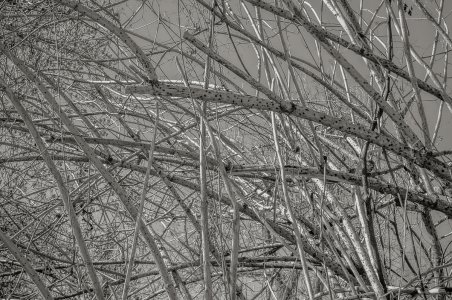
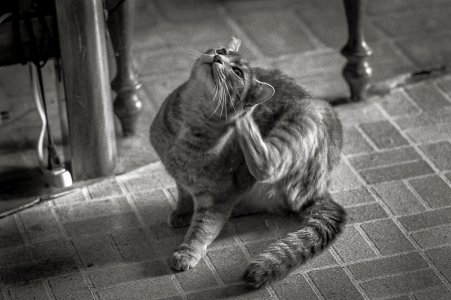
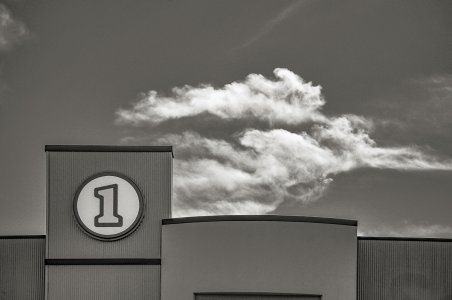
I know all the technical reasons for shooting Raw but I'm only interested in how the photo looks, not the process that gets the look. Virtually everything I shoot is B&W. It's my mindset. So I start by cooking in the B&W look with a JPEG so there's no alternate color version to consider or second-guess. My comparison is Tri-X and HP5 film--the stuff I shot for decades before digital. The problem is that digital images--even JPEGs--look too clean. I try to dirty them up a bit in Silver Efex before final processing in LR. I then save them as another generation JPEG with one JPEG of a smaller size to post online. Technical image quality is not my goal. Just the implied feeling of the subject.
Here's a few done over the last month. All JPEG B&W, all processed in Silver Efex and LR. Nothing fancy.





Benjamin Marks
Mentor
Very nice dynamic range there! It's working well for you.
SWB
Member
Starting my photography in an era when Agfa 'Record Rapid' or 'Portiga' were the warm tone papers and 'Brovira' was the cool tone paper I've always used the underlying tint of a paper emulsion to reinforce the feeling I want to get across in a monochrome image. It was something Adams and Weston did and has been a staple technique of fine art photography throughout the 20th century. Cool or warm tones still apply even in the digital age and I would never touch 'Greyscale' because I don't like the entirely neutral look in a print, it feels like a cop out for not making a decision. So I always apply a tone when using SilverEfex, often unifying a project by having the photographs rendered in a similar way.
Benjamin Marks
Mentor
Helpful perspective!
jbielikowski
Jan Bielikowski
I like to convert to grayscale somwhere just before 16->8bit, also for web I reconvert to sRGB for a foolproof file.
vitaly66
slightly tilted
Yes, exactly right, and cannot be overstated. Classic fine art "b&w" prints are rich in character, tone, nuance, and tactile presence -- precisely because they are not merely "greyscale". Rather the choice of paper, emulsion, toning (selenium, etc.) all lend a subtlety of color -- whether or not the viewer is consciously aware of that color.Starting my photography in an era when Agfa 'Record Rapid' or 'Portiga' were the warm tone papers and 'Brovira' was the cool tone paper I've always used the underlying tint of a paper emulsion to reinforce the feeling I want to get across in a monochrome image. It was something Adams and Weston did and has been a staple technique of fine art photography throughout the 20th century. Cool or warm tones still apply even in the digital age and I would never touch 'Greyscale' because I don't like the entirely neutral look in a print, it feels like a cop out for not making a decision. So I always apply a tone when using SilverEfex, often unifying a project by having the photographs rendered in a similar way.
I get goosebumps in the presence of a fine art photographic print. Anything and everything from albumen to platinum-palladium to gelatin-silver -- all are exquisite. From the intrinsic "color" of these materials, to the various ways they interact with the spectrum of ambient light, the classic materials and processes provide a dimension to photography that must be experienced first-hand to be fully appreciated.
The contemporary term of "monochome" (or "monochrom" for the leica-challenged spellers among us ;>) -- as it has nowadays become the norm for describing b&w photography -- always strikes me as inadequate and misleading. Fine b&w photography is anything but monochromatic. (And I say that as an owner of a digital camera labeled as "Monochrome" ;>)
GMOG
Established
- When you shoot for a BW effect do you bother saving the color data in the file when you get to the end of the process?
- If so, can you talk about the thought process leading up to that decision?
- For those of you with monochrome cameras (Leica, Pentax), I assume that all the sensors are recording is luminescence values anyway. Any thoughts?
- Does my practice seem foolish or disadvantageous in any way?
- I shoot RAW and I save most of those original files, so by default I am saving the color data when I reach the end of the process;
- I save the RAW files for images that are important to me. It's akin to saving negatives instead of throwing them away after making prints. Converting to JPEG is throwing data away, data that could impact future revisions;
- I do not have a monochrome digital camera (yet?); and
- Your practice is fine if it delivers results you like. And that's what counts, right? 😄
I do the bulk of my editing using Adobe Camera RAW. Converting to B/W is the first step in my process for B/W images. I have tried converting after editing in color and I find that those conversions still require work after the conversion to B/W.
Benjamin Marks
Mentor
Benjamin Marks
Mentor
Scrolling up and down between the two, I think I like the "Greyscale" version up top better, but to extend a couple of the persuasively made comments above the "white" of that b&w is really dependent on my laptop's unprofiled screen. The "sepia" choice . . . it's a choice. I don't mind it. In my wet darkroom days, I played around with sepia and liked its purported preservation effects. I still have plenty of prints from my college days that have that warm tone and they still look good.
agentlossing
Well-known
Lately I've been a little discouraged with my desktop workflow for converting images to monochrome... and it's only been made more acute by testing a Pentax Monochrome camera - the ease of dealing with B&W RAWs cannot be overstated. But I think part of that experience is also that the sensor (particularly at higher ISOs) gives a bit of its own flavor, and B&W needs a flavor in addition to simple grayscale, otherwise digital B&W images look very, very boring to me.
Silver Efex is of course the go-to for adding flavor/texture/grain and whatever else to a B&W conversion, but I have been finding I'm just dissatisfied somehow by using it lately. It's hard, or nearly impossible, to get a simple look which comes close to my own self-processed and scanned B&W negatives.
I'm actually most pleased with my customized profile on the Ricoh GRIIIx these days. I edited the "soft B&W" JPEG profile to come closer to what my negatives look like, and most of the time the JPEGs coming from the camera have the look I want for B&W. But using my other cameras is less easy. I think I just need to fight with Silver Efex until I create a profile which works similarly, and then save that for future use. It's just that, with digital images, single profiles don't work the same across different cameras and exposures. It's all a compromise, I guess. Unless I could afford the Pentax M...
Silver Efex is of course the go-to for adding flavor/texture/grain and whatever else to a B&W conversion, but I have been finding I'm just dissatisfied somehow by using it lately. It's hard, or nearly impossible, to get a simple look which comes close to my own self-processed and scanned B&W negatives.
I'm actually most pleased with my customized profile on the Ricoh GRIIIx these days. I edited the "soft B&W" JPEG profile to come closer to what my negatives look like, and most of the time the JPEGs coming from the camera have the look I want for B&W. But using my other cameras is less easy. I think I just need to fight with Silver Efex until I create a profile which works similarly, and then save that for future use. It's just that, with digital images, single profiles don't work the same across different cameras and exposures. It's all a compromise, I guess. Unless I could afford the Pentax M...
agentlossing
Well-known
I've always leaned more towards selenium than sepia tint in B&W photos... it's something I almost never do, but I respond better to the one than the other when I see them.Scrolling up and down between the two, I think I like the "Greyscale" version up top better, but to extend a couple of the persuasively made comments above the "white" of that b&w is really dependent on my laptop's unprofiled screen. The "sepia" choice . . . it's a choice. I don't mind it. In my wet darkroom days, I played around with sepia and liked its purported preservation effects. I still have plenty of prints from my college days that have that warm tone and they still look good.
justins7
Well-known
For my B+W photos I use Photoshop and convert using Adjustments —> Black and White. Using this method I can selectively change the way colors convert, using sliders to determine how colors shift. It's like using different colored lens filters. This way I can make some objects in the image recede or push forward, and minimize distracting areas. It's a great tool that's unique to digital, more or less, and allows you to control composition.
I find that with digital images, especially wide-angle shots, it's always a battle over excessive visual information, so selective B+W conversion allows me to help point the viewer's eyes to what you want to emphasize. It has to be used subtly, though, since it can look strange and distracting, like for instance if a tomato's red color is shifted too much to look black, or too light, it just looks wrong and there can be a hard edge around that color.
I find that with digital images, especially wide-angle shots, it's always a battle over excessive visual information, so selective B+W conversion allows me to help point the viewer's eyes to what you want to emphasize. It has to be used subtly, though, since it can look strange and distracting, like for instance if a tomato's red color is shifted too much to look black, or too light, it just looks wrong and there can be a hard edge around that color.
GMOG
Established
For my B+W photos I use Photoshop and convert using Adjustments —> Black and White. Using this method I can selectively change the way colors convert, using sliders to determine how colors shift. It's like using different colored lens filters.
Adobe Camera RAW also provides this function, in the "B&W Mixer" panel.
Bill Blackwell
Leica M Shooter
I've found that converting to greyscale has no effect on the final output what starting with RAW DNG files. However, when starting with film (Kodachrome in particular) scanned to TIF files, converting to greyscale eliminates color overtones in the image. The only other step I don't follow on your procedure list is reducing files to 8-bit. I only reduce JPG file sizes for posting in galleries and forums.
I always leave my TIF files large for future processing possibilities without having to go back to the original DNG image.
I always leave my TIF files large for future processing possibilities without having to go back to the original DNG image.
Benjamin Marks
Mentor
I tend to leave the original Raw files unmolested as part of the original import. Like you, I tend to convert to 8 bit so that I can save to jpg.
Darthfeeble
But you can call me Steve
OP doesn't mention printing other than the blurb books. My understanding is that all that care about bits and such is really not too necessary unless you print, and at that larger then 8x10. I print up to 12x18, just for myself but still I try to make the best I can so like suggested I keep things in 16bit. All my stuff is done in LR > SFX > LR and then saved as a jpg for email and posting purposes.
rodgersfoto
Member
Freakscene
Obscure member
In the days when a silver print was the dominant way through which b&w photos were viewed, I put a huge amount of effort into getting ‘neutral’ prints for my own work. The specific combinations are irrelevant because the products aren’t available anymore. But I love that digital has finally provided media for really neutral tones - with inkjet prints you can get perfectly white paper and greys with no colour. I like that, although I know that not everyone does. At the same time the labs where I worked offered dozens of combinations of toners and papers, many of which, to me, looked vile.
The Silver Efex ‘sepia’ just looks fake to me - the best sepia tones were from bleach and redevelop in the toner processes, which were a lot of work. The colour varied with the density a lot, and with a number of specific process related factors including solution temperature, but no digital versions I’ve seen do this effectively.
In terms of the ‘best’ process - if you want to preserve as much as is in the file as possible, delaying 16-8 bit conversion may help. But otherwise if you like how your output works, then it’s good enough. One thing to bear in mind is that if you use a digital camera with a monochrome sensor, you have already expanded out a 12 (Leica typ 246, ancient Kodak dSLRs) or 14 (most everything else b&w digital) bit file to 16 bits before removing those data. This has a greater effect than you might expect. You need to compare that effect against that of demosaicing artefacts, ultimately, to decide if a b&w digital camera is right for you.
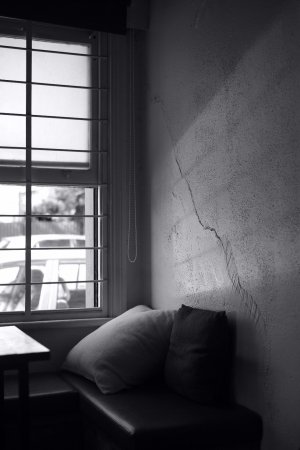
Marty
The Silver Efex ‘sepia’ just looks fake to me - the best sepia tones were from bleach and redevelop in the toner processes, which were a lot of work. The colour varied with the density a lot, and with a number of specific process related factors including solution temperature, but no digital versions I’ve seen do this effectively.
In terms of the ‘best’ process - if you want to preserve as much as is in the file as possible, delaying 16-8 bit conversion may help. But otherwise if you like how your output works, then it’s good enough. One thing to bear in mind is that if you use a digital camera with a monochrome sensor, you have already expanded out a 12 (Leica typ 246, ancient Kodak dSLRs) or 14 (most everything else b&w digital) bit file to 16 bits before removing those data. This has a greater effect than you might expect. You need to compare that effect against that of demosaicing artefacts, ultimately, to decide if a b&w digital camera is right for you.

Marty
Last edited:
Share:
-
This site uses cookies to help personalise content, tailor your experience and to keep you logged in if you register.
By continuing to use this site, you are consenting to our use of cookies.


